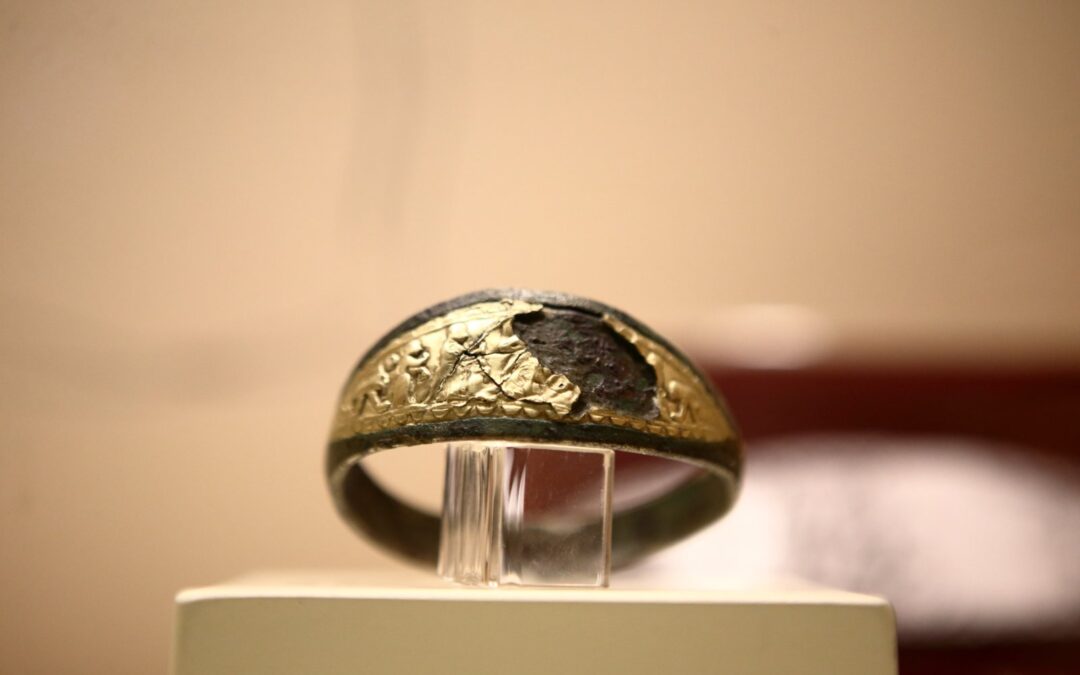
by Moe | Apr 9, 2022 | Ancient History Articles
A farmer living in Turkey’s central Çorum province, discovered a 3,300-year-old ancient bracelet while he was plowing his farm.
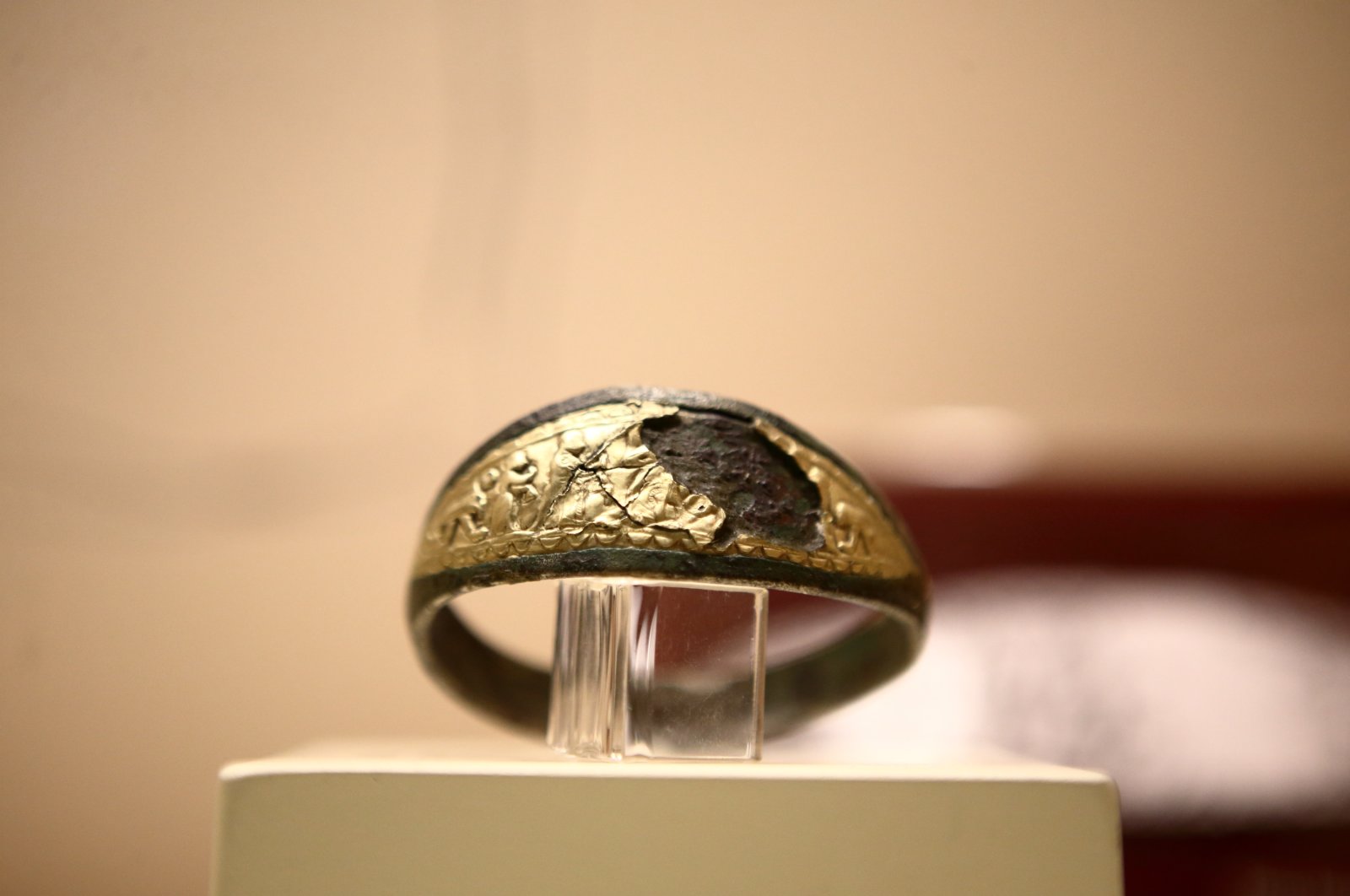
The artifact is from the ancient Hittite civilization, and it carries depictions of Hittite symbols, including imagery of the Itar/Auka and his servants Ninatta and Kulitta.
The farmer and his neighbor found the artifact while working on their farm in Çorum’s central district of Orduzu.
the farmer, identified only as Osman K., said that he saw a metal item in the field while he was plowing his farm and stopped his tractor upon discovering that it was an ancient artifact.
The farmer said that he initially tried to sell the bracelet, thinking it had no historical value. However, once he failed in his attempt to sell it and learned that it was an ancient piece, K. reported the finding to the local gendarmerie station.
The gendarmerie then sent the bracelet to the Çorum Museum Directorate for further examination and conservation work.
The Hittites were an ancient peoples of Anatolia who lived between 1600 B.C. and 1200 B.C.
They were an Indo-European people who established an empire centered on Hattusa in north-central Anatolia around 1600 B.C., as well as a kingdom in northern Syria called Mitanni or Hanigalbat and a kingdom in southern Levant called Kizzuwatna or Que or Cilicia, both of which became known as Syria after its conquest by Assyria in 740 B.C.
Hüseyin Kocabaş, the head of the museum, told Anadolu Agency (AA) that it is rare for an old artifact to be unearthed with such a high degree of preservation.
Noting that the bracelet is also decorated with animal figures including lions and bulls as well as gods depicted in human form, Kocabaş said: “The bracelet is 1 cm wide and 16 cm long. It is made of bronze and tin metal alloy.”
He added: “It can be dated back to around 1300 BC.
The archaeologist also noted that there are few pieces of Hittite-era jewelry and this piece sheds light on the jewelry styles of the civilization.
“The bracelet has important historical value. It is one of the rareest examples of this type of work. This kind of bracelet dates back to the Late Bronze Age [1500-1200 B.C.] and is not only important for Çorum but also for Anatolia and even the world,” said Ahmet Tuna, a professor at Çorum Hitit University’s History Department.
Tuna also noted that this was not the first time an image depicting Auka had been discovered in Çorum, although similar artifacts were found in other Turkish provinces.
With its location in Çorum, the most famous home of the ancient Hittite city of Hattusa and a UNESCO World Heritage Site since 1986.
Çorum has made its mark on history as an influential settlement in antiquity.
Hattusa served as the capital of the Hittite Empire, which played an important role in urban life and the development of Bronze Age civilizations.
It was the first national excavation site in Turkey.
Moe is the founder of GnosticWarrior.com. He is a father, husband, author, martial arts black belt, and an expert in Gnosticism, the occult, and esotericism.
by Moe | Mar 2, 2017 | Ancient History Articles, Science
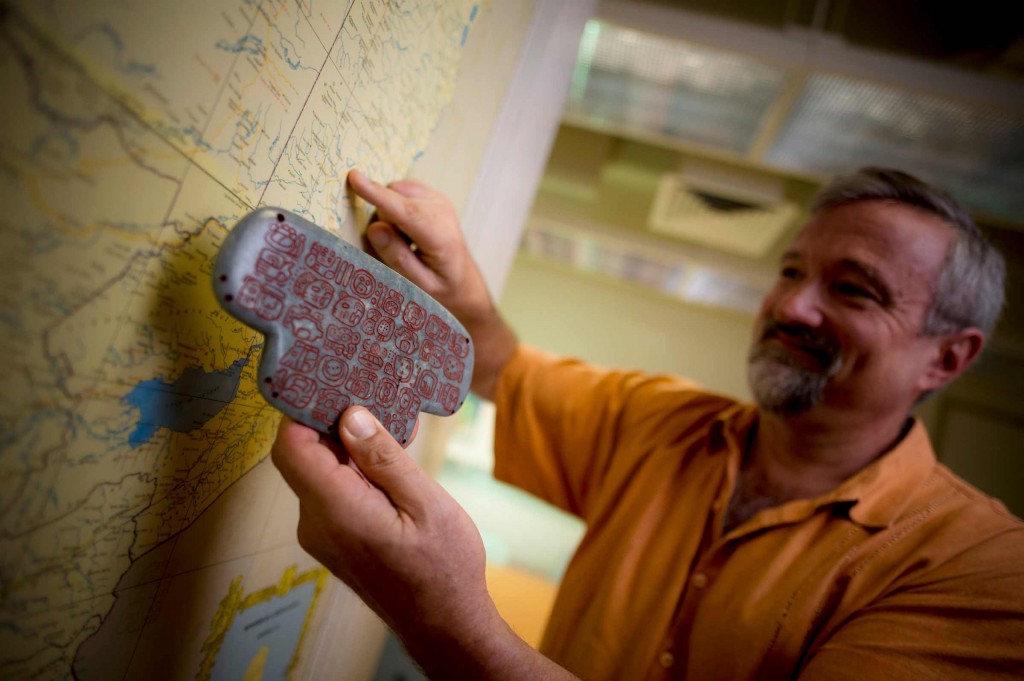
To say that UC San Diego archaeologist Geoffrey Braswell was surprised to discover a precious jewel in Nim Li Punit in southern Belize is something of an understatement.
“It was like finding the Hope Diamond in Peoria instead of New York,” said Braswell, who led the dig that uncovered a large piece of carved jade once belonging to an ancient Maya king. “We would expect something like it in one of the big cities of the Maya world. Instead, here it was, far from the center,” he said. (more…)
Moe is the founder of GnosticWarrior.com. He is a father, husband, author, martial arts black belt, and an expert in Gnosticism, the occult, and esotericism.
by Moe | Mar 2, 2017 | Ancient History Articles, Science
A newly discovered trove of 16 engraved and otherwise modified limestone blocks, created 38,000 years ago, confirms the ancient origins of the pointillist techniques later adopted by 19th and 20th century artists such as Georges Seurat, Vincent Van Gogh, Camille Pissarro, and Roy Lichtenstein.
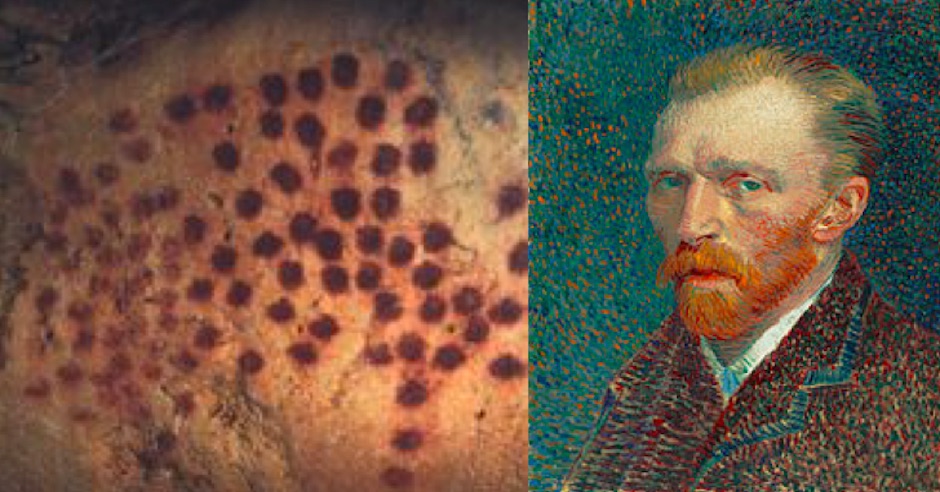 (more…)
(more…)
Moe is the founder of GnosticWarrior.com. He is a father, husband, author, martial arts black belt, and an expert in Gnosticism, the occult, and esotericism.
by Moe | Mar 18, 2016 | Ancient History Articles
A warrior king buried almost 2,500 years ago has been discovered in an iron-age settlement unearthed at the foot of the Yorkshire 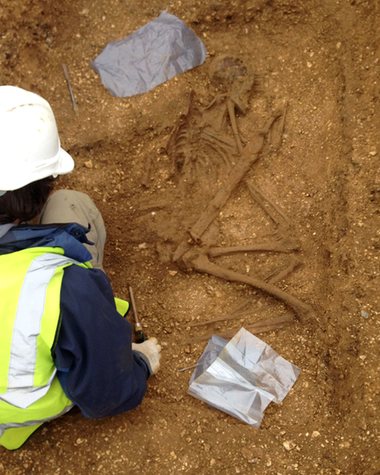 Wolds. The remains of the burial ground is being hailed as one of the largest and most significant iron age finds of recent times.
Wolds. The remains of the burial ground is being hailed as one of the largest and most significant iron age finds of recent times.
In 2014 a housing developer stumbled upon the fossil site in the small market town of Pocklington in east Yorkshire, a find that is said to be of extreme “national and international significance”.
One of the most exciting discoveries was the “remarkably” well-preserved remains of a youthful warrior. Found in the cemetery and dated to 800 BC he had been ritually speared to “release his spirit” and lay in the ground next to his sword. (more…)
Moe is the founder of GnosticWarrior.com. He is a father, husband, author, martial arts black belt, and an expert in Gnosticism, the occult, and esotericism.
by Moe | May 4, 2015 | Ancient History Articles, Meaning of Symbols
Researchers from the University of Haifa have found what they are calling a bronze mask in the 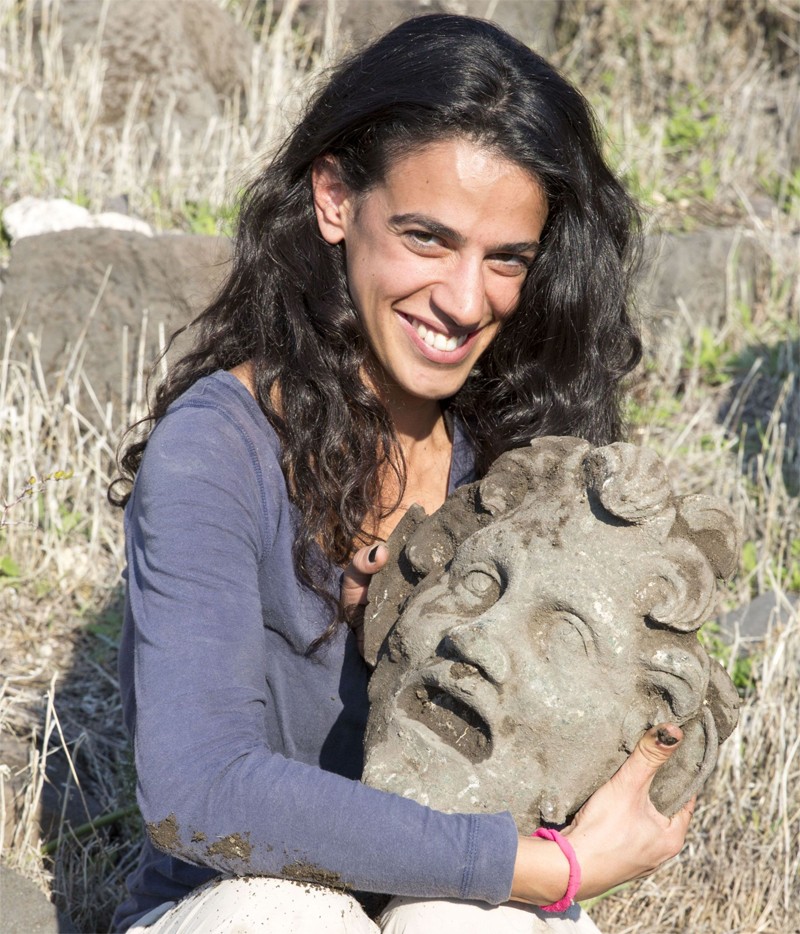 image of the Greek god Pan that was recently discovered at an archaeological dig at the Sussita National Park in northern Israel.
image of the Greek god Pan that was recently discovered at an archaeological dig at the Sussita National Park in northern Israel.
According to head researcher Dr. Michael Eisenberg of the Zinman Institute of Archaeology, bronze masks of this size—larger than a human head—are extremely rare and none have yet been found depicting Pan or any other figures from Greek or Roman mythology.
In Ancient Greek mythology, Pan is the son of Zeus. Diodorus Siculus had said that Pan was adored by the Egyptians. Pan usually terrified the inhabitants of the adjacent country, even when he was nowhere to be seen, that kind of fear which often seizes men, and which is only ideal or imaginary, has received from him the name of panic which is derived from the Latin “panici .” His statues were to be seen in all the temples, and that to his honor they had built in Thebes, the city of Chemmis (Egypt), that is, the city of Pan or Panopolis. (more…)
Moe is the founder of GnosticWarrior.com. He is a father, husband, author, martial arts black belt, and an expert in Gnosticism, the occult, and esotericism.
by Moe | Mar 5, 2015 | Ancient History Articles, Science
Archaeologists in France have discovered an ancient Celtic burial ground from around the 5th 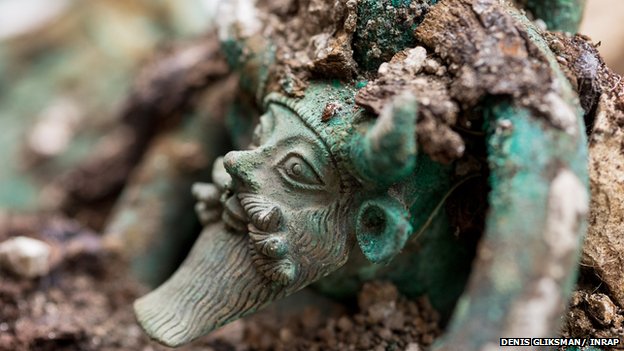 century with a skeleton buried alongside a chariot, a long bronze sword found in its sheath, and magnificent Greek and possibly Etruscan artifacts.
century with a skeleton buried alongside a chariot, a long bronze sword found in its sheath, and magnificent Greek and possibly Etruscan artifacts.
Experts are not entirely certain of the gender of the 2,500 year old remains, but they believe it is an ancient Celtic prince because of the items that were found at the site.
They say he died in Lavau, near Troyes.
Here is what France’s national archaeological dig institute had written:
In the center of a tumulus 40 m in diameter, the deceased and his chariot lie at the heart of a vast burial chamber of 14 m², one of the largest recorded by archaeologists for this time of the end of the early Iron Age ( Hallstatt). Under the collapse of the tumulus levels, the tomb contains funerary deposits worthy of the highest wealth Hallstatt elites.
Arranged at an angle, the most ostentatious objects consist of pools, a cist (bucket) bronze with a thin ceramic fluted décor, a knife in its sheath. The centerpiece of the funeral filing room is a bronze cauldron, about 1 m in diameter.
Four circular handles are adorned with heads Acheloos Greek river god here represented horned, bearded, with bull ears and a triple mustache. The edge of the pot is decorated with eight heads of lions. The work is Greek or Etruscan. Inside the pot rests a ceramic oinochoe Attic black-figure Dionysus lying under a vine faces a female character. It would be a banquet scene, a recurring theme in Greek iconography. The lip and the foot of the pitcher are set with a gold plate, highlighted a watermark meandering decor. It is the northernmost to date. This service Greco-Italic original drink reflects the banquet practical Celtic aristocratic elites.
Celtic principalities and Etruscan and Greek city-states
The late sixth century and the beginning of the fifth century BC are marked by the development of the economic activity of Etruscan and Greek city-states of the West, especially Marseille. In search of slaves, metals and precious goods (including amber ), the Mediterranean traders come into contact with the continental Celtic communities.
Those mastering natural means of communication , especially in the area of the interfluve Loire- Seine- Saône- Rhine-Danube , benefit from this traffic and have their elites acquire many goods of prestige which the most notable are found buried in monumental tombs tumulary – La Heuneburg Hochdorf and Germany, for example , in Bourges, Vix and now Lavau .
Moe is the founder of GnosticWarrior.com. He is a father, husband, author, martial arts black belt, and an expert in Gnosticism, the occult, and esotericism.






 Wolds
Wolds
